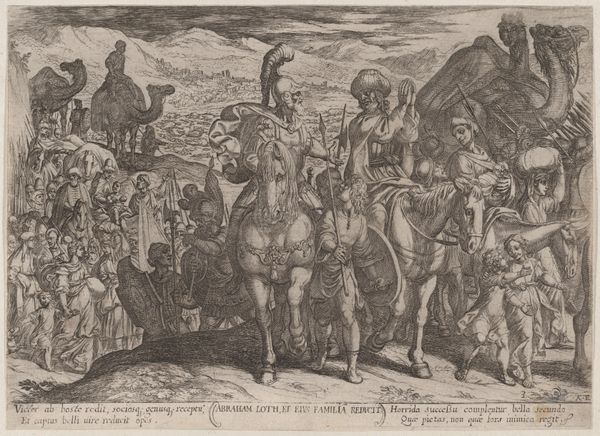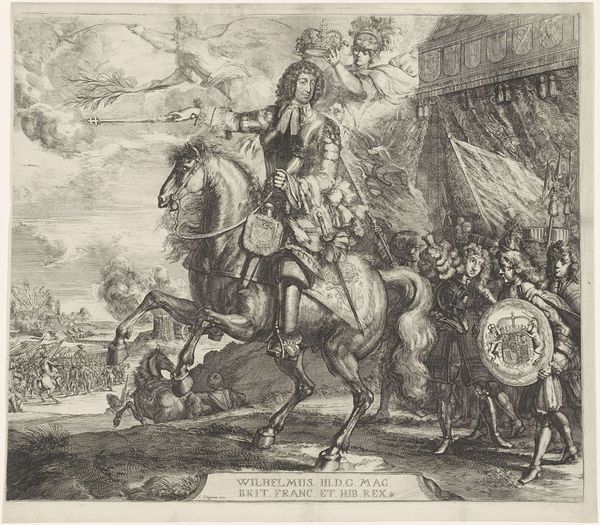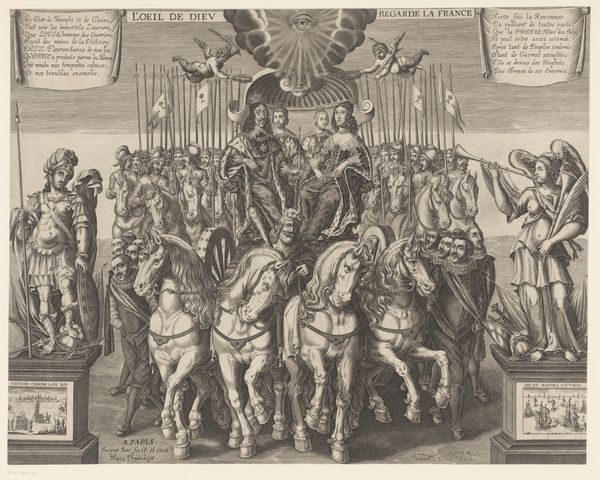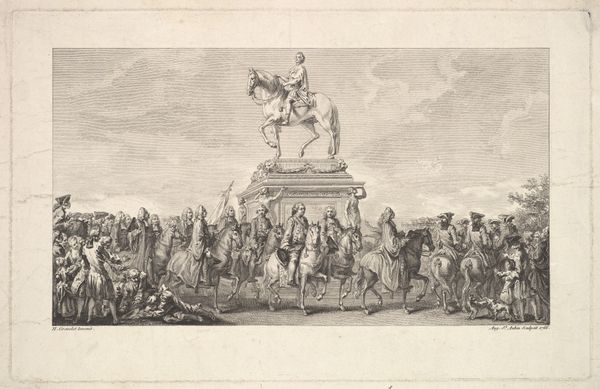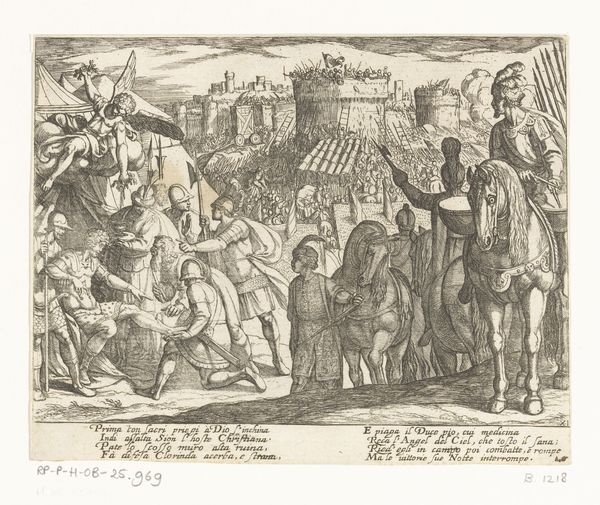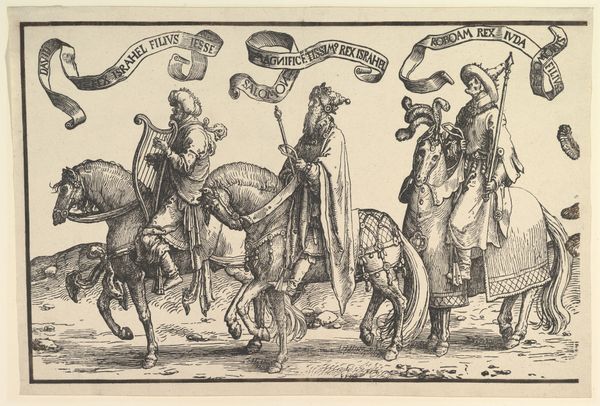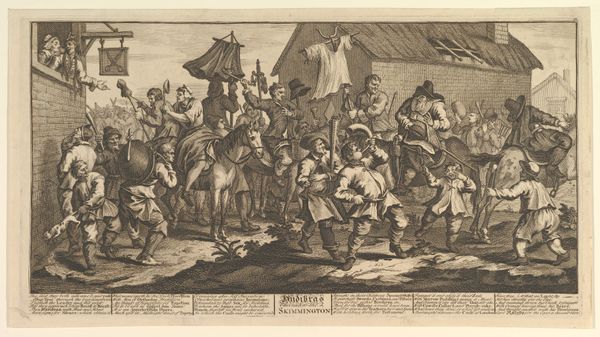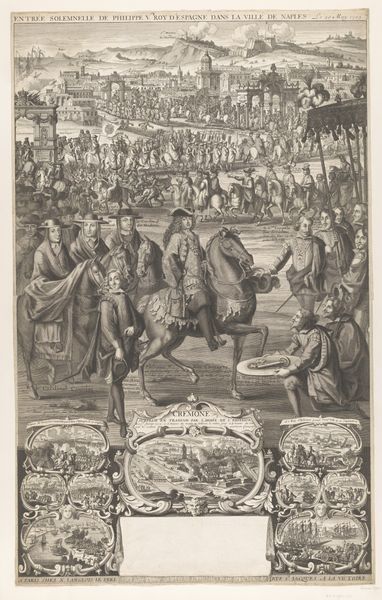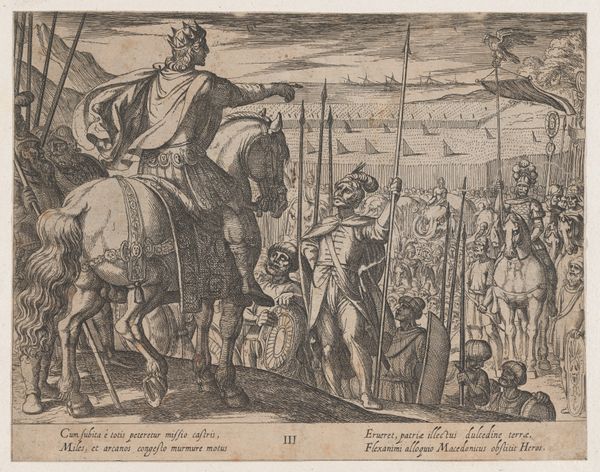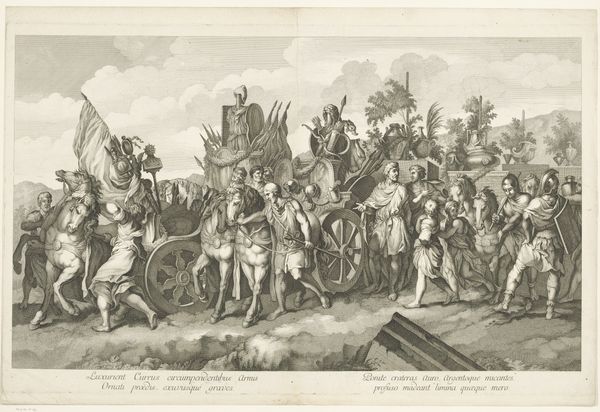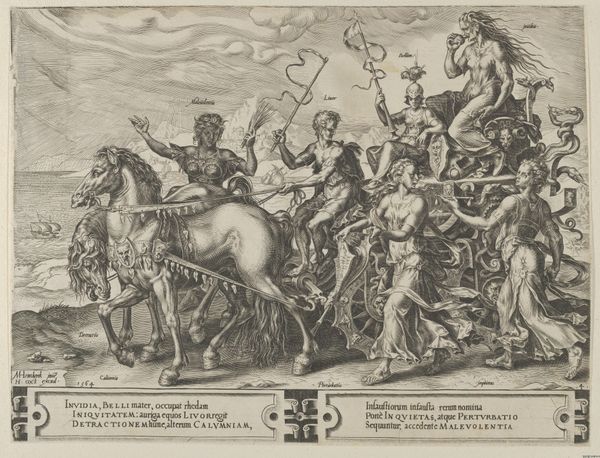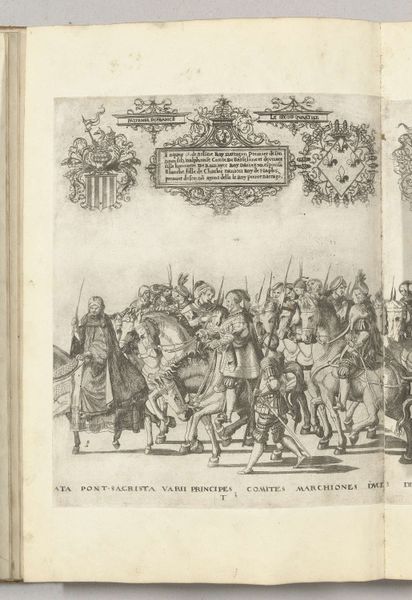
William III as Prince of Orange, with the four preceding Stadthouders, William I, Maurice, Frederick Hendrick, William II 1660 - 1708
0:00
0:00
drawing, print, engraving
#
portrait
#
drawing
#
baroque
# print
#
landscape
#
history-painting
#
engraving
Dimensions: sheet: 18 7/16 x 22 1/2 in. (46.9 x 57.1 cm)
Copyright: Public Domain
This engraving of William III as Prince of Orange, with the four preceding Stadthouders, was made by Romeyn de Hooghe, a Dutch artist, in the latter half of the 17th century. The image seeks to legitimize the power of William III by depicting him as the latest in a line of powerful Dutch leaders. By placing him on horseback and in the foreground, the artist emphasizes his strength and authority. The depiction of William III with his predecessors creates a sense of historical continuity and reinforces the idea that he is the rightful heir to their legacy. Engravings like this played a crucial role in shaping public opinion. They were often commissioned by political figures or institutions to promote certain ideas or agendas. In this case, the engraving serves as a form of propaganda, designed to bolster support for William III and his policies. To fully understand this image, we can consider the historical context in which it was created. What were the key political events of the time? What were the major social and economic issues? By exploring these questions, we can gain a deeper understanding of the complex relationship between art and society.
Comments
No comments
Be the first to comment and join the conversation on the ultimate creative platform.
